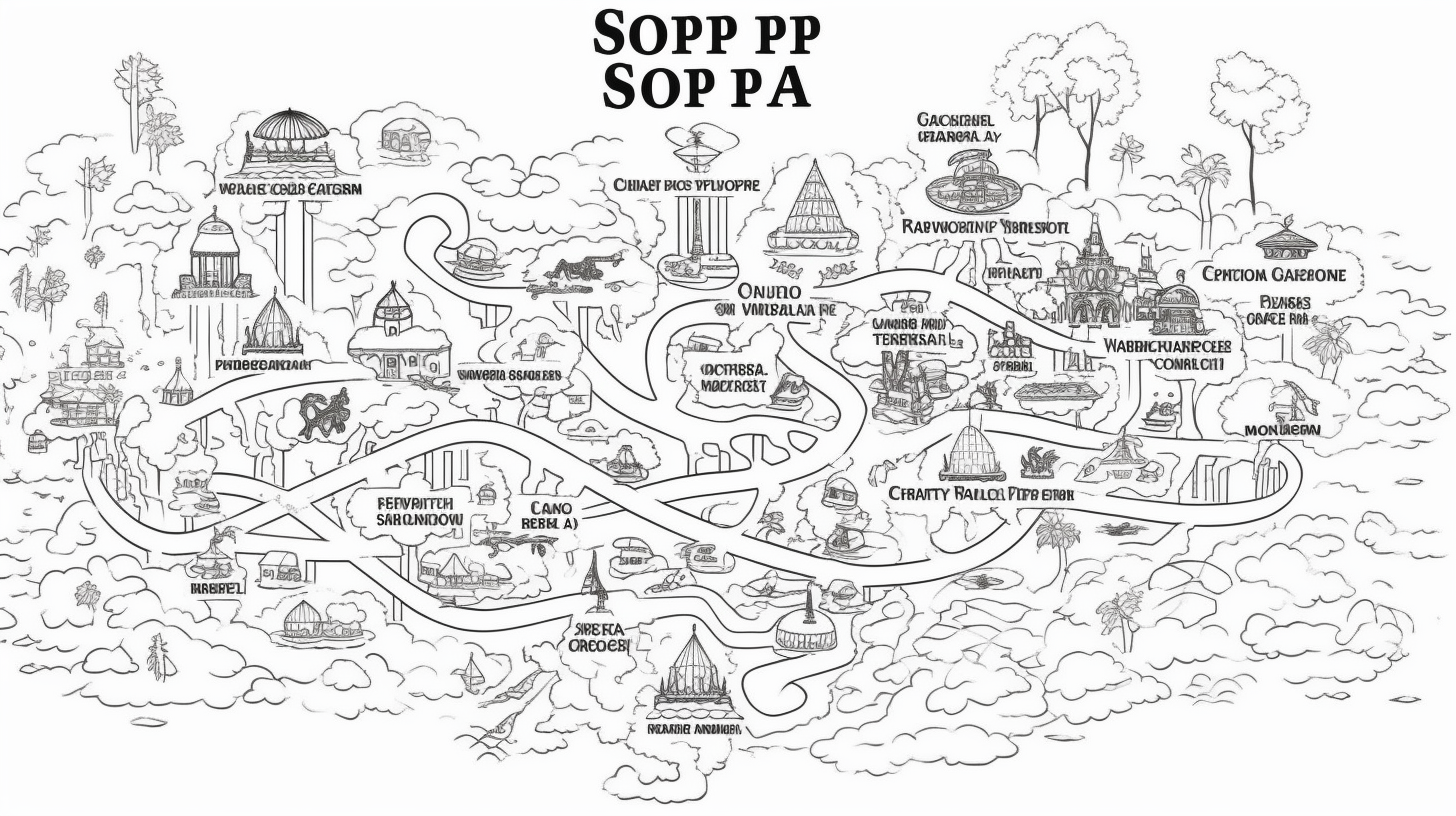Leaping into the Labyrinth: Implementing OSPF for the CCNA

Hey folks, listen up! Navigating through the intricate maze of OSPF (Open Shortest Path First) isn't a cakewalk for everyone. Let's be real, you might find yourself gulping that early morning espresso shot and breaking a sweat whilst burning the midnight oil. This journey, though bitter, pries open the eyes and is indeed a necessary experience. But let's not put the cart before the horse; we should kick off things from the very beginning.
To put it simply, imagine OSPF as the Big Kahuna or the Head Honcho ruling the roost of routing protocols. This intradomain routing protocol leverages link-state technology to function within an Autonomous System (AS). Essentially, network engineers favor it for its scalability, efficiency, and not to overlook, its flawless capability for error checking. But that's skipping to the end. Let's rewind and go through the ABC's of OSPF.
The Nitty-Gritty of OSPF
So, OSPF is like that friend who loves gossip. It just has to know everything happening in the network, from link states to changes in topology. It's all about collecting and sharing data with its fellow OSPF-quipped routers – it's just never satisfied with staying in the dark. It uses cost as its metric, which is inversely proportional to the bandwidth of the link. So, the higher the bandwidth, the lesser the cost. Makes sense right? Pay less for more!
Yet, the journey doesn't always sail smoothly. OSPF is infamous for its CPU and memory resources cravings, particularly in large-scale networks. Although OSPF is the unaddressed elephant in the room, a little patience and know-how can help us tame it, mirroring how we tackle most life challenges.
Making OSPF Tick
Before establishing a neighbour relationship, every OSPF router traverses several states. It’s like the stages of a relationship, really! But instead of dinner and movie, we’ve got Init, Two-Way, Exstart, Exchange, and Full. From neighbour discovery to database synchronization, each stage comes with its unique set of love letters - OSPF packets, if you will.
Remember the gossip habit we mentioned earlier? Well, it's not just idle chatter. OSPF routers house a database of its gossip with the links in its OSPF area, like a diary of all the network happenings – address, mask, cost, next hop, etc. It's a goldmine of information, forming the backbone of OSPF. It's based on this database that OSPF calculates the shortest path to reach its destination.
Comic Relief: OSPF and Its Solicitous Drama
Alright, let’s take a breather and envision an OSPF router as a nosy but well-meaning neighbour in a sitcom, always prying into others’ business but with good intentions. Picture this: OSPF needs to know the “latest gossip” from router A but it can’t hear over the “network noise”, getting tiny fragments of information that aren't particularly helpful. So, what does OSPF do? It doesn't give up; instead, it pulls out the big guns and sends a series of Link State Request Packets. It’s like our OSPF neighbour banging on router A’s door, demanding "Spill the beans, A! What's happening?". OSPF just can’t stand being left in the dark, can it?
Each router in OSPF's little neighbourhood plays a different role. For instance, DR (Designated Router) is like the head of the neighbourhood watch - holds all the gossip first, before spreading it around. Cisco does love to keep things interesting with its characters, doesn’t it?
Taming the Beast - OSPF Areas
As OSPF network’s scale, it's important to keep our gossip-loving friend from overstepping its boundaries and flooding the network with information. Hence, OSPF networks are typically divided into ‘areas’ to contain the gossip and limit the CPU usage. It's like having a neighbourhood watch for every block, making community management more efficient and manageable.
So, how do the areas communicate? Simple! Area Border Routers (ABRs). They act as the gatekeeper, managing the information flow between areas. Then, there's the Backbone Router, the heart of the OSPF that facilitates communication between various areas. Now who says networking can't be thrilling?
You might feel as though you're tackling a Herculean task due to the complexities and quirks of implementing OSPF. However, as you delve deeper into the OSPF universe, each twist and turn will unveil something new and captivating. Not only do you secure your victory in the CCNA 200-301 exam by mastering OSPF, but you also reinvent yourself as an explorer and storyteller of your network neighborhood.
In conclusion, as you comprehend OSPF, you solve a mystery, peeling off one layer after another. It proves challenging, engaging, and most importantly, rewarding. So, ready to leap into the thrilling labyrinth of OSPF?